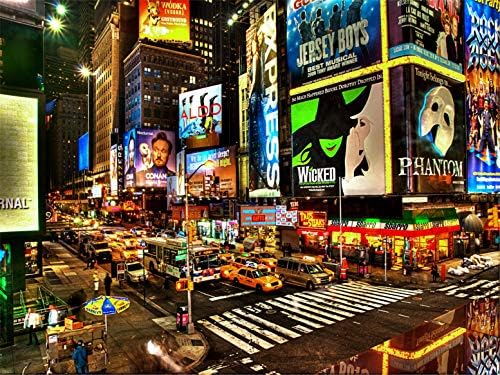New York City’s iconic Broadway strip is undergoing a renovation. Recently, Mayor Eric Adams revealed the city’s ambitious “Broadway Vision” project, a plan to infuse this age-old corridor with modern features like bike lanes, pedestrian-friendly plazas, and low-traffic shared streets.
The city is consciously choosing to place pedestrians over vehicles, acknowledging the recent changes in how New Yorkers traverse the city. The pedestrian-to-driver ratio heavily leans in favor of walkers, and this shift recognizes that.
Partnering for Progress: The Role of BIDs
James Mettham, president of the Flatiron NoMad Partnership, was standing alongside Mayor Adams when he announced the Broadway Vision project in March. This partnership is a business improvement district (BID) that represents some of Broadway’s largest property owners and developers, including an array of restaurants and bars.
BIDs were initially conceptualized in the latter part of the 20th century, when American cities grappled with downtown deterioration. These districts collected fees from property stakeholders to supplement essential services that cities were neglecting. Historically, BIDs advocated for car-friendly infrastructure, hoping to lure in suburbanites. But in the wake of the COVID-19 pandemic and its impact on urban work culture, these very groups are championing the pedestrian.
In New York City, the move toward a future with fewer cars is clear. From the redesign of Park Avenue to Downtown Brooklyn’s focus on pedestrians, BIDs are leading the way. The rest of the country isn’t far behind, with business groups in cities like San Diego and Washington, DC, advocating for similar changes.
However, it’s not a unanimous shift. BIDs in different parts of North America continue to prioritize outdated reliance on vehicles, and concerns about these BIDs controlling public spaces and reinforcing inequalities remain. Despite the ongoing debate, in major urban areas, they play a significant role in shaping the cityscape.
A Transformation in Progress
Despite some skeptics raising alarms about potential traffic congestion, Mayor Adams was resolute. Emphasizing a necessary shift in urban culture, he pointed to the numbers—specifically, that pedestrians outnumber drivers in NYC.
By late June, the evidence of this ambitious project was undeniable. Streets that once echoed with honks and engine roars now hummed with cyclists zooming down new lanes and diners filling every available outdoor seat.
One such marvel, the NoMad Piazza, which began as a pandemic-driven experiment in outdoor dining, now offers a European touch, with an ambiance reminiscent of Milan’s pizzerias.
Manhattan’s Meatpacking District: An Evolution
Manhattan’s Meatpacking District is another New York City neighborhood amid a transformation. Historically an industrial hub, the district has seen significant shifts, including the establishment of the Whitney Museum, the renowned High Line, and other attractions.
As the district grapples with its evolving identity, the local BID envisions transforming surplus asphalt spaces into bustling pedestrian zones while balancing the historical relevance and practical needs of the area.
Other Major Cities Introduce New BID Projects
New York City is not the only major US city experiencing a major transformation. Other metropolitan areas, such as Boston and San Francisco, have begun implementing projects prioritizing pedestrians and cyclists while moving away from car dependency.
Boston’s Greenway BID Project
In Boston, the Greenway BID, born from the ambitious Big Dig project, exemplifies how business entities can impact city planning. This BID collaborates with A Better City, an organization representing Boston’s major employers, to convert car-heavy zones into pedestrian-friendly areas.
Such progressive shifts aren’t just happening in a vacuum. The changing landscape of BIDs, with professionals from the city planning and design domain joining the ranks, is driving this transformation. This evolution reflects a broader debate: Should the management of public spaces shift to private entities? While these collaborations often deliver faster, there’s the risk of sidelining non-commercial areas.
San Francisco’s Post-Pandemic Urban Revival
The pandemic dealt a hefty blow to San Francisco’s business district, with the city grappling with vacant offices and plummeting public transport ridership. This downturn, coupled with media reports painting the downtown area as unsafe, has led to businesses seeking support from BIDs more than ever.
The nonprofit Downtown SF Partnership has developed the Public Realm Action Plan to breathe life back into the city’s streets. They have envisioned a vibrant space with more green areas, bustling frontages, and ample outdoor seating.
While businesses are undoubtedly clamoring for immediate relief, BIDs are focusing on making the streets more vibrant through events like night markets and pop-up drag shows, providing a sense of community.
The Road Ahead
Urban landscapes have been shaped by decades of policymaking. Today’s challenges, brought to light by the pandemic, underscore the need for cities to be flexible, inclusive, and innovative. While business groups have traditionally sought policies to bolster their interests, the current climate presents an opportunity. If they align with broader urbanistic visions, they can play a significant role in shaping the cities of tomorrow.

